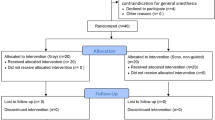Abstract
The purpose of this study was to evaluate how the upper calyx–lower calyx infundibular (ULI) angle influences intrarenal stone migration during percutaneous nephrolithotomy (PCNL) in patients with a solitary renal pelvis stone and significant hydronephrosis. 50 adult patients with a solitary renal pelvis stone larger than 20 mm were considered for PCNL with a pneumatic lithotriptor for stone fragmentation. Inclusion criteria were moderate to severe hydronephrosis and upper calyx infundibular width >10 mm, and access point was the lower calyx in all cases. The ULI angle as well as stone fragment migration from the renal pelvis toward the upper calyx was noted during the operation. To determine the “critical” angle above which the probability of stone migration would be increased significantly, receiver operating characteristic curve was used. Mean stone size was 33.8 ± 13.2 mm. In 23 patients (46 %) the stone migrated toward the upper calyx during stone fragmentation. Mean ULI angle was significantly wider in patients whose stone migrated (120.2 ± 20.5 versus 102.2 ± 21.4, P = 0.004, 99 % CI = 6.04–29.9). A ULI angle of 117.5° was the critical angle, above which the rate of stone migration rose significantly (P < 0.008). One-session stone-free rate was significantly higher in patients without stone migration (P = 0.03). In patients with a solitary renal pelvis stone and significant hydronephrosis, a wider ULI angle was associated with a greater likelihood of stone scattering which could potentially affect the outcome of PCNL with pneumatic lithotriptor. A cut-off angle of 117.5° was the critical angle, above which access via a calyx other than the lower calyx (example: middle or upper calyx) seems advisable.


Similar content being viewed by others
References
de la Rosette J, Assimos D, Desai M, Gutierrez J, Lingeman J, Scarpa R, CROES PCNL Study Group et al (2011) The Clinical Research Office of the Endourological Society Percutaneous Nephrolithotomy Global Study: indications, complications, and outcomes in 5803 patients. J Endourol 25:11–17
Desai M, De Lisa A, Turna B et al (2011) The clinical research office of the endourological society percutaneous nephrolithotomy global study: staghorn versus nonstaghorn stones. J Endourol 25:1263–1268
Mishra S, Sabnis RB, Desai M (2012) Staghorn morphometry: a new tool for clinical classification and prediction model for percutaneous nephrolithotomy monotherapy. J Endourol 26:6–14
Ganesamoni R, Sabnis RB, Mishra S, Parekh N, Ganpule A, Vyas JB et al (2013) Prospective randomized controlled trial comparing laser lithotripsy with pneumatic lithotripsy in miniperc for renal calculi. J Endourol 27:1444–1449
Binbay M, Akman T, Ozgor F, Yazici O, Sari E, Erbin A et al (2011) Does pelvicaliceal system anatomy affect success of percutaneous nephrolithotomy? Urol 78:733–737
Wosnitzer M, Xavier K, Gupta M (2009) Novel use of a ureteroscopic stone entrapment device to prevent antegrade stone migration during percutaneous nephrolithotomy. J Endourol 23:203–207
Aminsharifi A, Alavi M, Sadeghi G et al (2011) Renal parenchymal damage after percutaneous nephrolithotomy with one-stage tract dilation technique: a randomized clinical trial. J Endourol 25:927–931
Altunrende F, Tefekli A, Stein RJ et al (2011) Clinically insignificant residual fragments after percutaneous nephrolithotomy: medium-term follow-up. J Endourol 25:941–945
Skolarikos A, Papatsoris AG (2009) Diagnosis and management of postpercutaneous nephrolithotomy residual stone fragments. J Endourol 23:1751–1755
Smit M, Verhagen PC (2004) Preventing stone migration during percutaneous nephrolithotomy by using the stone cone. BJU Int 94:671–672
Tepeler A, Armağan A, Akman T, Polat EC, Ersöz C, Topaktaş R et al (2012) Impact of percutaneous renal access technique on outcomes of percutaneous nephrolithotomy. J Endourol 26:828–833
Aminsharifi A, Haghpanah R, Haghpanah S (2014) Predictors of excessive renal displacement during access in percutaneous nephrolithotomy: a randomized clinical trial. Urolithiasis 42:61–65
Miller J, Durack JC, Sorensen MD, Wang JH, Stoller ML (2013) Renal calyceal anatomy characterization with 3-dimensional in vivo computerized tomography imaging. J Urol 189:562–567
Acknowledgments
This study was supported by Shiraz University of Medical Sciences. We thank K. Shashok (AuthorAID in the Eastern Mediterranean) for improving the use of English in the manuscript.
Conflict of interest
None.
Author information
Authors and Affiliations
Corresponding author
Rights and permissions
About this article
Cite this article
Aminsharifi, A., Eslahi, A., Safarpour, A.R. et al. Stone scattering during percutaneous nephrolithotomy: role of renal anatomical characteristics. Urolithiasis 42, 435–439 (2014). https://doi.org/10.1007/s00240-014-0678-8
Received:
Accepted:
Published:
Issue Date:
DOI: https://doi.org/10.1007/s00240-014-0678-8




